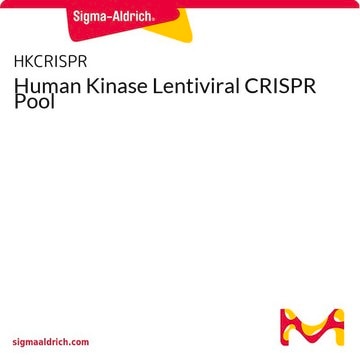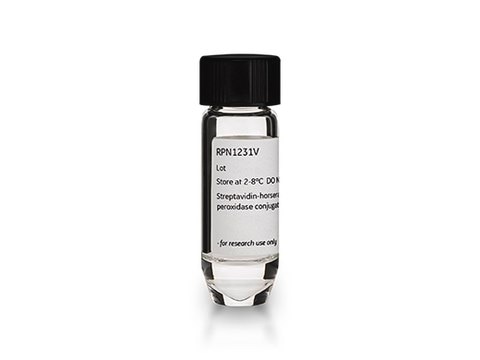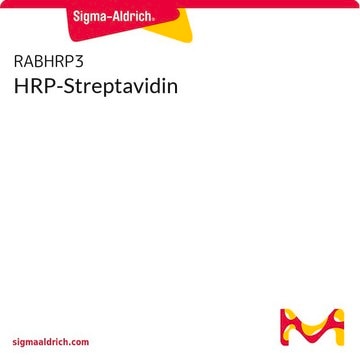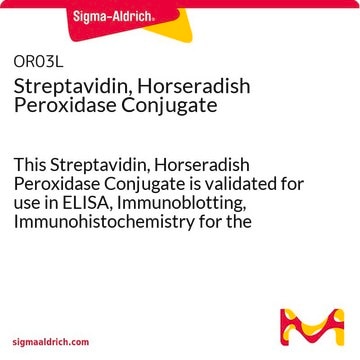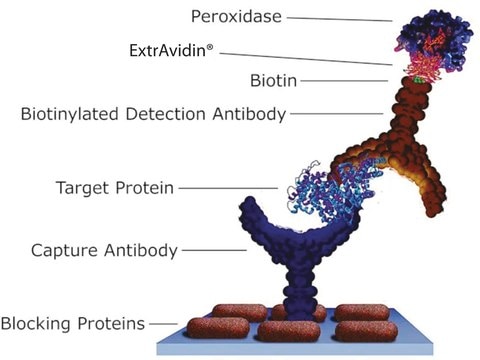MAB10764
Anti-SBP-tag Antibody, clone 20 | MAB10764
clone 20, 1.0 mg/mL, from mouse
Synonym(s):
streptavidin binding peptide
Sign Into View Organizational & Contract Pricing
All Photos(1)
About This Item
UNSPSC Code:
12352203
eCl@ss:
32160702
NACRES:
NA.41
Recommended Products
biological source
mouse
Quality Level
antibody form
purified immunoglobulin
antibody product type
primary antibodies
clone
20, monoclonal
species reactivity
human
concentration
1.0 mg/mL
technique(s)
immunocytochemistry: suitable
western blot: suitable
isotype
IgG1κ
shipped in
wet ice
target post-translational modification
unmodified
General description
Streptavidin Binding Peptide tag is a useful and versatile peptide that can be inserted into expression vectors for easy detection of recombinant proteins and purification. The sequence for SBP-tag is 38 amino acids long having a nanomolar scale binding affinity for streptavidin with an equilibrium constant of 2.5 nM.
Specificity
Demonstrated to react with cells expressing the SBP tag.
This antibody recognizes SBP tag.
Immunogen
Epitope: Unknown
Linear peptide corresponding to SBP tag.
Application
Immunofluorescence Analysis: A previous lot was used by an independent laboratory in IF. (Hudson, D., et al. (2008). MBC. 19(7):3070-3079.)
Research Category
Epitope Tags & General Use
Epitope Tags & General Use
Research Sub Category
Epitope Tags
Epitope Tags
Quality
Evaluated by Western Blot in pTrAP-GFP transfected Hek293 lysate.
Western Blot Analysis: 0.1 ng/mL of this antibody detected SBP-tag on 10 µg of pTrAP-GFP transfected Hek293 lysate.
Western Blot Analysis: 0.1 ng/mL of this antibody detected SBP-tag on 10 µg of pTrAP-GFP transfected Hek293 lysate.
Target description
The protein expresss is pTrAP-GFP plasmids containing a Histidine tag, S-tag, streptavidin-binding pepide (SBP) tag, and GFP. The protein expressing is ~37 kDa
Physical form
Format: Purified
Protein G Purified
Purified mouse monoclonal IgG1κ in buffer containing 0.1 M Tris-Glycine (pH 7.4, 150 mM NaCl) with 0.05% sodium azide
Storage and Stability
Stable for 1 year at 2-8°C from date of receipt.
Analysis Note
Control
pTrAP-GFP transfected Hek293 lysate
pTrAP-GFP transfected Hek293 lysate
Disclaimer
Unless otherwise stated in our catalog or other company documentation accompanying the product(s), our products are intended for research use only and are not to be used for any other purpose, which includes but is not limited to, unauthorized commercial uses, in vitro diagnostic uses, ex vivo or in vivo therapeutic uses or any type of consumption or application to humans or animals.
Not finding the right product?
Try our Product Selector Tool.
wgk_germany
WGK 1
flash_point_f
Not applicable
flash_point_c
Not applicable
Certificates of Analysis (COA)
Search for Certificates of Analysis (COA) by entering the products Lot/Batch Number. Lot and Batch Numbers can be found on a product’s label following the words ‘Lot’ or ‘Batch’.
Already Own This Product?
Find documentation for the products that you have recently purchased in the Document Library.
Ashley J Evans et al.
Cell reports, 19(12), 2613-2626 (2017-06-22)
Ionotropic glutamate receptor (iGluR) trafficking and function underpin excitatory synaptic transmission and plasticity and shape neuronal networks. It is well established that the transcription, translation, and endocytosis/recycling of iGluRs are all regulated by neuronal activity, but much less is known
Damien F Hudson et al.
Molecular biology of the cell, 19(7), 3070-3079 (2008-05-16)
We engineered mutants into residues of SMC2 to dissect the role of ATPase function in the condensin complex. These residues are predicted to be involved in ATP binding or hydrolysis and in the Q-loop, which is thought to act as
Gaelle Boncompain et al.
Methods in molecular biology (Clifton, N.J.), 1174, 211-223 (2014-06-21)
In mammalian cells, secretory proteins are transported to their destination compartment via the secretory pathway. Cargos start their journey in the endoplasmic reticulum and then reach the Golgi complex where they are processed and sorted to be delivered to their
Petr Lapcik et al.
Cellular & molecular biology letters, 28(1), 68-68 (2023-08-25)
Desmocollin-1 (DSC1) is a desmosomal transmembrane glycoprotein that maintains cell-to-cell adhesion. DSC1 was previously associated with lymph node metastasis of luminal A breast tumors and was found to increase migration and invasion of MCF7 cells in vitro. Therefore, we focused
Lucia Janacova et al.
Scientific reports, 13(1), 1285-1285 (2023-01-24)
Catechol-O-methyl transferase (COMT) is involved in detoxification of catechol estrogens, playing cancer-protective role in cells producing or utilizing estrogen. Moreover, COMT suppressed migration potential of breast cancer (BC) cells. To delineate COMT role in metastasis of estrogen receptor (ER) dependent
Our team of scientists has experience in all areas of research including Life Science, Material Science, Chemical Synthesis, Chromatography, Analytical and many others.
Contact Technical Service
